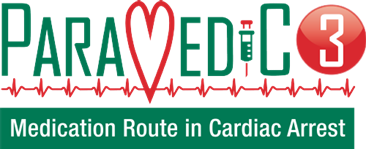Paramedic-3 Trial
In adult out-of-hospital cardiac arrest patients, is an intraosseous access first strategy, compared with an intravenous access first strategy, clinically and cost-effective?
In adult out-of-hospital cardiac arrest patients, is an intraosseous access first strategy, compared with an intravenous access first strategy, clinically and cost-effective?
 The PARAMEDIC-2 trial showed that adrenaline administration during cardiac arrest is highly effective at restarting the heart but has a much smaller effect on long-term survival and favourable neurological function. However, average times to drug administration were long (21 min) and modelling data shows that every one-minute reduction in time to drug administration from ambulance arrival would increase absolute 30-day (longer term) survival by 0.7% (a 22% relative increase).
The PARAMEDIC-2 trial showed that adrenaline administration during cardiac arrest is highly effective at restarting the heart but has a much smaller effect on long-term survival and favourable neurological function. However, average times to drug administration were long (21 min) and modelling data shows that every one-minute reduction in time to drug administration from ambulance arrival would increase absolute 30-day (longer term) survival by 0.7% (a 22% relative increase).
Use of intraosseous (IO) access (catheter insertion into bone marrow) by UK ambulance paramedics in out of hospital cardiac arrest has increased over recent years and some studies suggest that it is faster and more likely to be successful than intravenous (IV) vascular access (catheter insertion into a vein). Pharmacokinetic studies suggest similar times to reach peak drug concentration are associated with both routes.
Consequently, Paramedic 3’s research question is:
In adult out-of-hospital cardiac arrest patients, is an intraosseous access first strategy, compared with an intravenous access first strategy, clinically and cost-effective?
The trial will be conducted across English and Welsh ambulance services. Adult patients who sustain an out-of-hospital cardiac arrest that require vascular access for drug administration will be randomised in a 1:1 ratio to either an IO first strategy (intervention) or an IV first strategy (control) group. The primary outcome measure for the study is 30-day survival. Secondary outcome measures include neurological function, quality of life and survival at other time-points, and cost-effectiveness.
For further information: https://warwick.ac.uk/fac/sci/med/research/ctu/trials/paramedic3